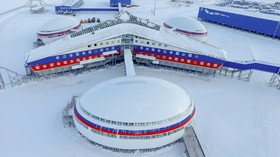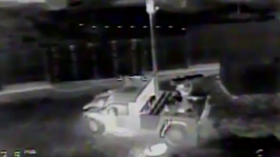Hypersonic Avangard in service & finish of Arctic clean-up: Russian military plans for 2019

The Russian defense ministry outlined its plans for next year in an annual report, which include deployment of hypersonic warheads and a new advanced Borei-class submarine as well as wrapping up its Arctic clean-up.
The annual report was made on Tuesday by Defense Minister Sergey Shoigu at a meeting chaired by President Vladimir Putin. The minister offered a lot of statistics on the armed forces life in 2018, from the percentage of weapons and equipment that need to be replaced with modern hardware to amount of money saved with introduction new electronic ID cards for service members. But there are also some highlights about new weapons the Russian military got this year or plans to get in the next one.
Barrage tests
In 2018, the Russian nuclear forces tested its ability to fire missiles as fast as possible, the minister reported. This ability is crucial in an all-out nuclear war when the enemy is trying to obliterate your nuclear arsenal and limit the damage of retaliation strike.
One test in May involved the strategic nuclear submarine Yury Dolgoruky, which fired a barrage of four Bulava missiles from the White Sea to a target range in Kamchatka. It was the first time such a volley was fired from a Borei-class submarine.
Also on rt.com WATCH: Russia tests its NUKES in large-scale drillsAnother multiple launch was done last month when an upgraded Tupolev Tu-160 bomber fired 12 Kh-101 cruise missiles at a target range in the Arctic.
Kinzhal in the sky
The big new weapon in Russia’s arsenal this year is the Kinzhal hypersonic missile. It’s currently in test deployment, but Mig-31 interceptors carrying the large projectile are already patrolling airspace over the Black Sea and the Caspian Sea. According to Shoigu, 89 sorties of this kind have been conducted in 2018.
The minister also mentioned the test deployment of the Peresvet laser system, which started on December 1. The laser is part of Russia’s announced response to the development of US global anti-ballistic missile infrastructure, but its exact purpose remains unconfirmed. Some defense experts believe it can take out earth-sensing satellites by disabling their optic sensors.
Advanced Borei and hypersonic gliders
The minister also confirmed earlier reports that the Knyaz Vladimir nuclear submarine trials are underway. The sub is the first of the upgraded Borei-A variant, which has improved stealth capabilities and communication equipment compared to the Yury Dolgoruky and the two other “regular” Boreis. Shoigu said the Knyaz Vladimir will enter service in 2019.
Also on rt.com Sea trials of upgraded Borei-class nuclear submarine reportedly underway in RussiaAnother weapon slated to enter service next year is the hypersonic glider Avangard. According to the report, the first missile regiment armed with Avangard-tipped Yars missiles will be deployed in 2019.
The Sarmat missile, however, was only briefly mentioned as undergoing tests with no projection offered of when it would be ready.
Grip on Arctic
Shoigu mentioned the progress in the military’s development of its Arctic infrastructure. This year the Severomorsk-1 airfield in northwestern Russia reached minimum operational readiness after a major overhaul while the radar base on the Alexandra Land island in the Franz Josef Archipelago got 59 new buildings.
Watch AWESOME footage of Russia’s Northern fleet perform amphibious drills in Arctic waters pic.twitter.com/dkkzToDoeE
— RT (@RT_com) October 2, 2017
Next year is expected to become a major milestone for the Russian military’s presence in the Arctic. It will finish the clean-up of the mess left behind, when troops were pulled out from the bases after the collapse of the Soviet Union. There is about 9 percent of pollution left, and by the end of 2019 it will be cleaned, the minister promised.
Like this story? Share it with a friend!














